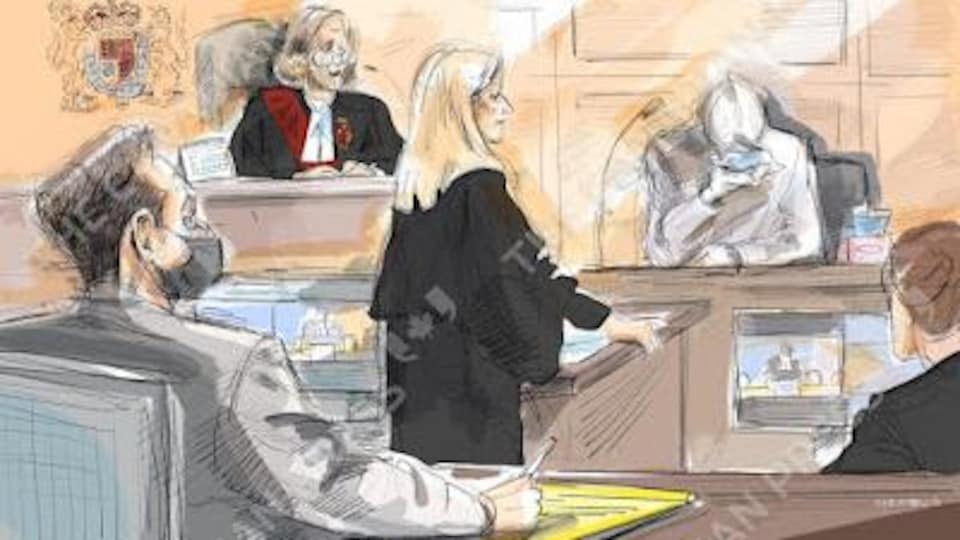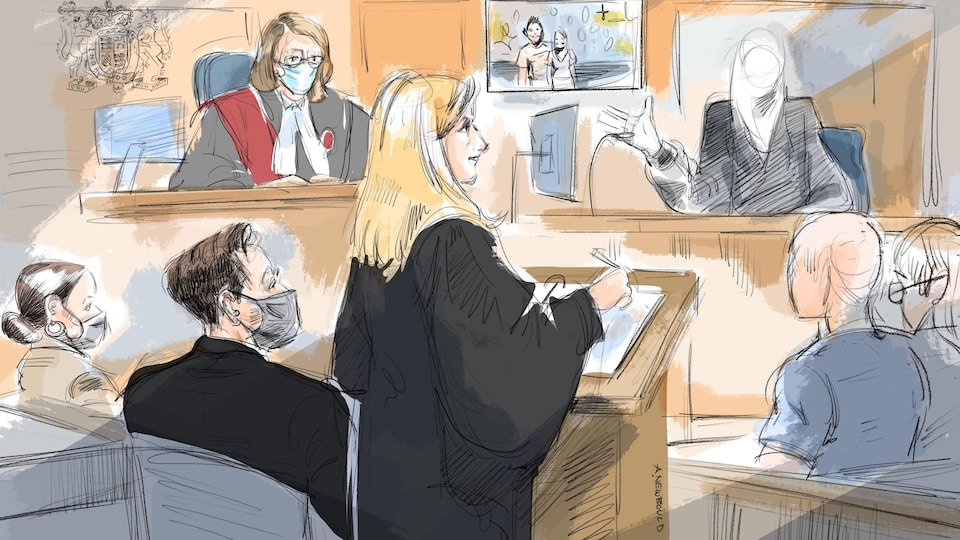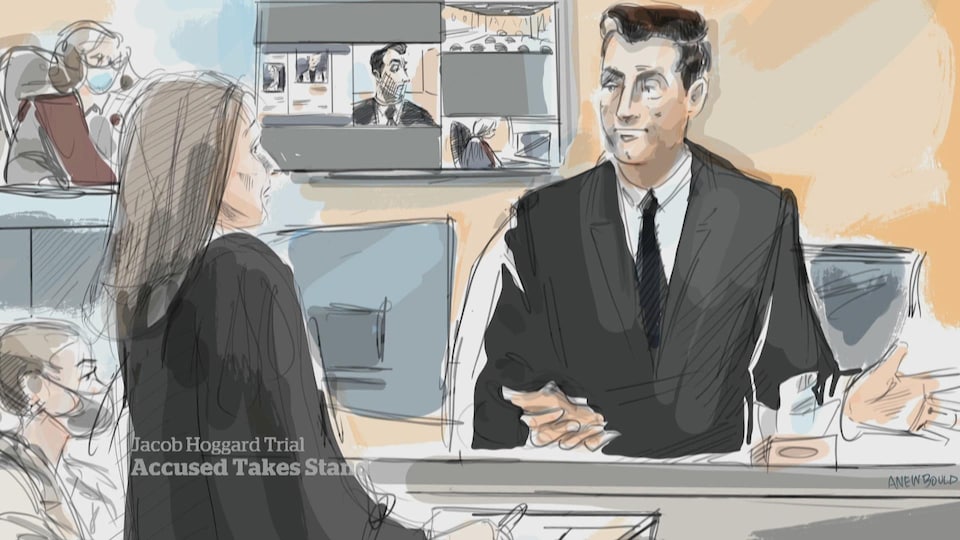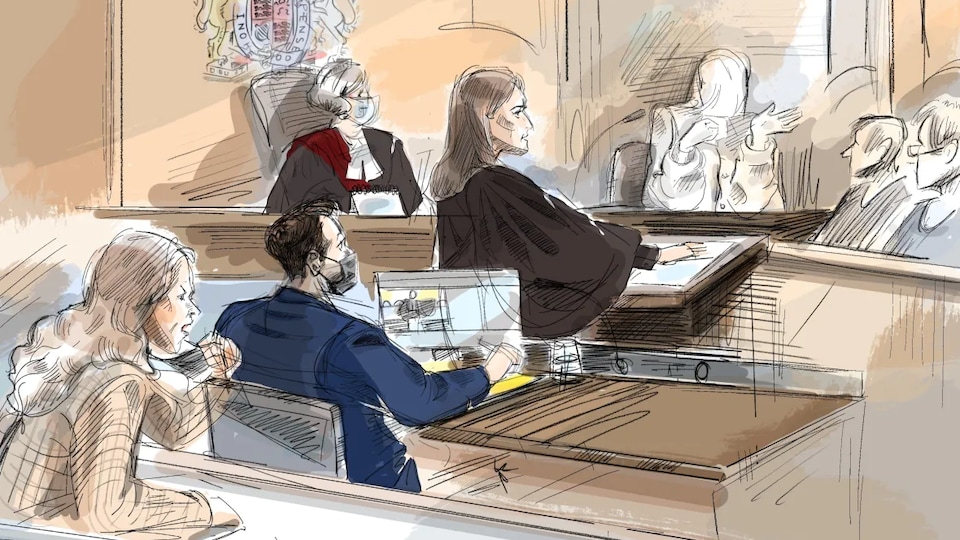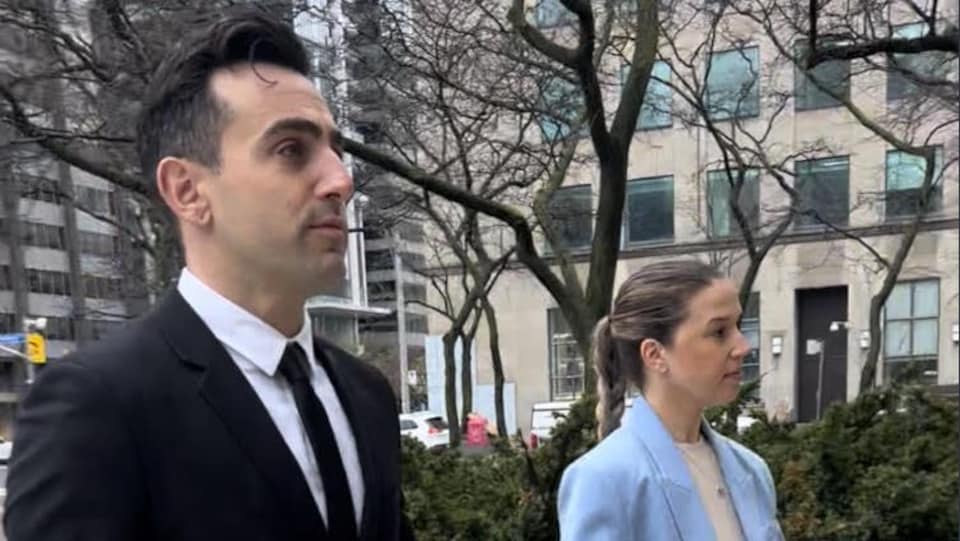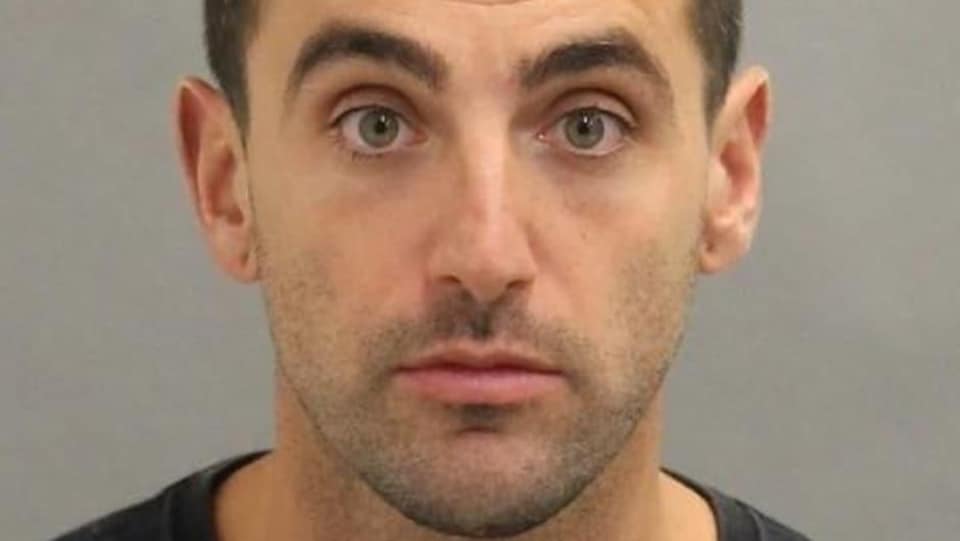Jacob Hoggard’s trial almost derailed on the fourth day of the hearings, when it had already been postponed many times because of the pandemic.
It is for this reason that Justice Gillian Roberts of the Ontario Superior Court did everything in her power to accommodate the defense and prevent an abrupt end to the trial.
The 37-year-old musician is charged with inappropriate sexual touching of a minor and sexual assault causing injury to the same teenage girl and an adult in the Toronto area in 2016.
At the heart of the matter: the story of the adult complainant on the witness stand. That day, the woman explains to the court that she did not immediately file a complaint with the police against the artist, because she thought that no one would believe that he had raped her. Only my friends believed me
she had said.
She then said that she had read articles on the Internet about other allegations of sexual misconduct by the singer.
It was enough for the defense to request the annulment of the trial for procedural defect and for the prejudice caused to its client.
Crown and defense had agreed during the selection of the jury that it was essential that the prospective jurors learned nothing about the defendant from the media for reasons of impartiality.
In Canada, the criminal code allows peremptory challenges for cause
which allow the Crown or the defense to exclude prospective jurors for specific reasons.
In this case, the 14 jurors who were chosen after a scrupulous selection of the parties had certified that they had not read anything about Jacob Hoggard in the media.
It was also clear that the witnesses for the prosecution were under no circumstances to mention to the jury any allegations other than those of which they claim to be victims.
The second plaintiff had however been ill-prepared by the Crown on this subject, according to the defense for which an injustice had just been caused to the place of her client.
The defense objection had been fiercely argued in the absence of the jury to neutralize
the woman’s testimony.
In her decision, the judge explained that the annulment of a trial for procedural error was an exceptional remedy
and that she did not believe that any prejudice had been caused to the accused.
I believe it is possible to correct the shooting
she said, adding that proper and immediate instruction to the jury should allow them to focus on the plaintiff’s allegations and not on what she had learned at the time in the press.
Attention : the rest of this text may shock some readers.
When the jury returned to court, the magistrate then asked the jurors to completely ignore this aspect of her testimony.
The trial was saved, but not for long. A technical error was again going to jeopardize the hearings the next day with the broadcast of a bad video extract in the courtroom.
A bad video
However, the jury did not know everything about the error that occurred during the cross-examination of the second complainant in the witness box on May 11.
The defense had presented a video clip of a black-and-white interview with a woman, who says she took time to recover from surgery after meeting the defendant.
The plaintiff had claimed that it was not her in this extract, even if it was a question at this time of the pleadings on vaginal lacerations which she had said to have endured after the alleged rape of November 22, 2016.
The voices in both video clips were altered, but the black and white clip sounded more like a male voice.
The court later realized the error and the difference between the two extracts.
The complainant’s statement had nevertheless caused confusion in court, so much so that the correct excerpt from the interview that the complainant had given to CBC, in color this time, had been shown in court.
Unusual excuses
The judge then had to apologize to the jury two days later and presented them with new instructions to clarify that the excerpt had absolutely nothing to do with this trial.
The Crown and the defense had taken a day to properly write the correction to present to the jurors, a matter of satisfying the parties.
The jury never knew, however, that the man in question in the bad video was ultimately Jacob Hoggard and that the woman was a third complainant who never filed a complaint with the police against the singer unlike the other two. .
CBC even wrote an article about him (New window) in March 2018 [en anglais seulement].
The fact remains that the presentation of the testimony of a third plaintiff at the trial of the singer was prejudicial for the accused, even if the judge was careful to warn the jury not to advance in conjecture on possible other allegations. of sexual misconduct against the singer.
Article 276 of the code
Another intense moment that captured the attention in the absence of the jury occurred when the defense wanted to know more about the sexual preferences of the second complainant during her cross-examination.
It is important to know what kind of relationship the complainant and my client agreed to before meeting in a hotel in Toronto
had explained the lawyer Megan Savard.
Me Savard wanted to use the exact words the woman would have used about their planned sexual activities at the time to show that the relationship was consensual.
According to Jacob Hoggard, the complainant sent him two alleged text messages before seeing him in Toronto.
In the first, she would have said to him: I want you to f*** the sh** out of me
[Je veux que tu me baises de façon sauvage
, traduction libre]. In the second, she would have written to him: I got to get clean before getting dirty
[Mieux vaut se laver avant de passer aux choses salaces
, traduction libre].
The defense suggested that it is possible that the second complainant and the defendant were talking about very specific consensual sex acts.
The more information we have about this, the better we will have a sense of the boundaries they agreed to before they saw each other.
had specified Me Savard.
The judge, at the insistence of the Crown, rejected these alleged text messages, citing section 276 of the criminal code.
This section prohibits the Crown or the defense from presenting evidence of a complainant’s sexual activity that is not part of an offense on the grounds that it can be used to make inferences related to the preferences of the alleged victim in matters of sex.
This rule of exclusion thus makes it possible to avoid advancing the idea that a complainant consented to the sexual activity which is at the origin of the incriminating accusation.
The Supreme Court of Canada has ruled that section 276 is constitutional.
Incompatible rights
Section 276 pits the rights of an accused to defend themselves at trial against Crown allegations against those of an alleged sexual assault victim to privacy regarding past sexual activity. .
The Crown argued that it did not matter what kind of relationship the woman and the accused had agreed to before meeting in Toronto in November 2016.
She said the woman’s sexual preferences were irrelevant in this trial. It is necessary to protect the sexual history of the complainant
raised prosecutor Jill Witkin.
Mr. Witkin added that it would be deeply unfair to mention the woman’s previous sexual activities.
In the same vein, she had said that it would be unreasonable to project to the jury the two masturbation videos that the accused had sent to the plaintiffs without prejudice to him.
You don’t have to see them
she said, adding that both parties had acknowledged the existence of the two recordings in the joint statement of facts at the start of the hearings.
The judge agreed with the Crown, but she was confused by the defense’s claim about the article she was challenging.
I did not expect this at the start of this trial
she admitted, however, reminding Me Savard that article 276 was written precisely to avoid situations like this
.
The Crown had suggested to the judge that Me Savard could cross-examine the woman on the frequency of their communications of a sexual nature before their meeting, but refrain from asking her any questions about her sexual inclinations.
In his right of reply, Me Savard had failed to convince the magistrate, saying that it was essential to know the plaintiff’s explicit language
in his dealings with the accused as opposed to general remarks about their romance
.
In this trial, the judge also had a fight with Me Savard and she never held back from showing her exasperation with the defense lawyer.
She often asked him to lower his tone or to relax the confrontational atmosphere that the defense arguments had stirred up in their exchanges.
The magistrate even had to rebuff the accused’s wife one day in the absence of the jury, warning her to stop nodding negatively in the courtroom during Mr. Witkin’s objections.
Visibly in disagreement with the position of the Crown, Rebecca Asselstine had not hesitated to show her disapproval in the audience. The judge then told him from the podium that [son] inconsiderate nod of the head [la] bothered
.
It was also decided to let the jurors go to vote, but accompanied by a court officer, if the jury has not yet reached a verdict on the day of the June 2 general election in Ontario.
Reference-ici.radio-canada.ca

